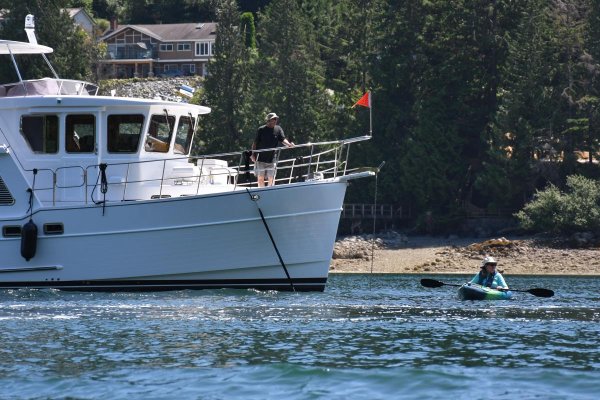I reall don't need to take the load off my windlass. I have a way oversized commercial hydraulic reel windlass mounted so as to be the strongest part of the boat. The deck is 1 1/2" plus and additionally the windlass is through-bolted using a 3/8" ss backing plate. the 6 Bolts themselves are 3/4".
I find the weight of the rode scope allows for gentle surging which keeps the
boat comfortable in most situations. Caroline is heavy, being fully ballasted and drawing almost nine feet, lots of fuel ( 1600 Gal) and 600 gallons of fresh water all in integral tanks down low.
That's interesting; you have a completely different windlass situation than 99% of us. On your particular reel, what happens in a big blow and the chain is taut?
Anyway,sound a like a cool setup. Pics?
Back to the bridle vs snubber brouhaha, as a user and liker of both I'll submit the following, as to bridle benefits, much of which has been already said:
1) redundancy" if one line chafes through or otherwise fails, you now have a snubber. Whereas,
2) If you run your snubber through the anchor chute, you are very prone to chafe. But I on pulpits I interacted with, running the snubber from a bow cleat and attaching it to the chain was pretty easy but,
3) with snubber off bow cleat, you now have a different dynamic twixt boat and rode vs straight off; that said people without pulpits, chutes or windlasses have been running anchor rodes off a bow cleat for decades, if not centuries.
Note also note FWIW that with a bridle, the boat will be laying to one of the two lines more often than not, horsing a bit between one and the other. You need some stronger wind or very strong current to lay to both.




